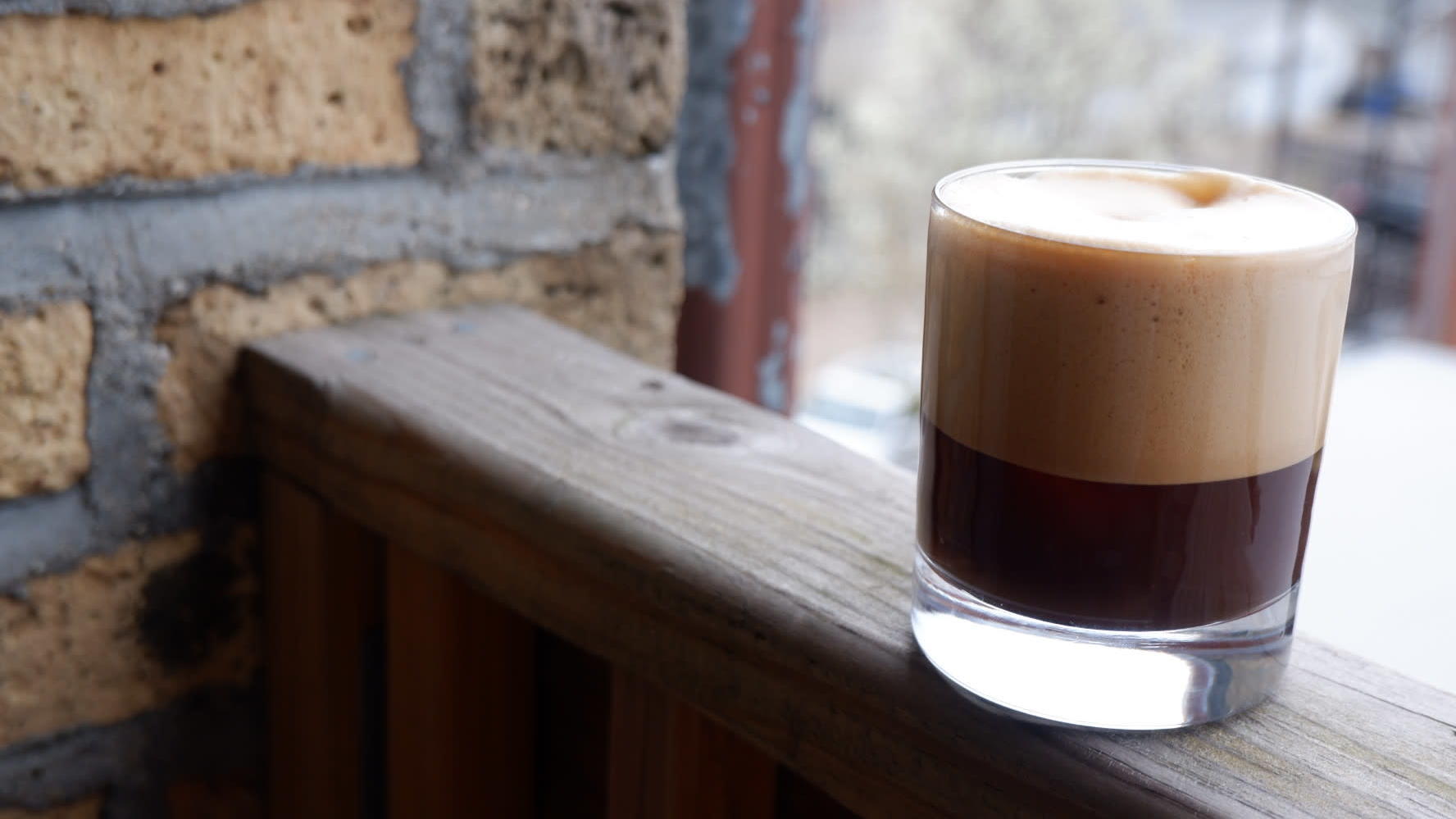Before Dalgona Coffee—way Before—there Was The Greek Frappe
The drink came out absolutely sweating. Already the dry Greek heat had begun melting the ice, and condensation was soaking through the napkin. The waiter placed it down in front of me quickly. In the busy side streets of Monastiraki, a neighborhood of Athens, finding a café to sit down is nearly impossible in summer, but we were lucky that day. I relaxed in my chair, seeking some shade from a tree overhead, and took a sip from my cool, foamy drink. Nothing is better than a Greek frappe, enjoyed exactly like this—but assuming you aren't planning a picturesque vacation in Greece this summer, you can make it at home with just a few ingredients.
The Greek love for the frappe (or frappé) accidentally began more than a half century ago. A Greek Nestlé representative by the name of Dimitris Vakondios invented the drink at the 1957 Thessaloniki International Trade Fair. The man either couldn't find hot water for his instant coffee or he was just sweltering hot, but the story goes that he grabbed a hot cocoa shaker, threw in coffee, cold water and ice, and shook the whole thing up. What came out was a foam-topped, bittersweet, perfectly chilled little coffee.

The frappe's popularity grew quickly in Greek coffee culture and became a staple at outdoor cafés during the summer. By the 1960s everyone was drinking it, and by the 1980s the drink became the national coffee beverage. Today, everyone is still drinking the frappe. It's more commonly an afternoon drink, right after a nap and before the usual late Greek dinner. As a child visiting family in Greece, I never saw an uncle, aunt, second cousin, the neighbor, or my mom without a cold frappe in hand at around 5 p.m. I began drinking them a few years ago too, and I instantly understood the obsession.
To make a Greek frappe is simple: All you need is Nescafé Instant Coffee, sugar, water, and milk. My mom always tells me to get the proper Greek Nescafé (which you can typically find in the international foods aisle at the grocery store), not the "American version." I've always followed her instructions to the letter, so I couldn't tell you the difference between the two. But I can only imagine the horror.
To begin, take a spoonful of instant coffee, a little water, and some sugar. The amount of sugar you add can vary: There is glykós (sweet, four teaspoons), métrios (medium, two teaspoons), or skétos (plain, no sugar). If you choose to add milk (usually evaporated), you might order it by a different name: "frappe-milk." It's not as common to add a lot of milk, but Greek Cypriots from the island of Cyprus tend to drink this variety of frappe more often. I prefer my frappe chorís gála (without milk), but it's not so terrible to add some every so often. Once you foam it up with a handheld foam mixer or a cocktail shaker, add some ice and maybe a bit more water. Stick a straw in it. The Greek frappe.
This drink could sound familiar, and you aren't crazy. There's the phenti hui coffee in India, a hotter version of the same kind of concoction. In Bulgaria, it's a frappe with Coca-Cola. Serbians add ice cream. And of course, there's always the Starbucks Frappuccino. But if you've been online at all for the past several weeks, you might recognize the recipe as the recently "invented" South Korean quarantine drink, dalgona coffee.
"What do you mean? Dalgona?" my family exclaimed when I called to tell them about this new viral trend. "Fluffy coffee? That is a frappe! Do these people know about frappes?"
To be fair, the two drinks aren't precisely the same, just markedly similar. The new "fluffy coffee" uses mostly milk, and the instant coffee is given a more whipped texture than the shaken foam of a frappe. But the answer to "Do these people know about frappes?" is no, most people don't. The Greek frappe hasn't traveled all that much beyond its borders. That's what has made it all the more surprising to see a resurgence of interest in instant coffee drinks in the U.S. Nescafé is now sold out a lot, like a lot—it took me two weeks to finally track down more. There are videos, articles, and essays online that feature critics trying out the new recipe. "Not bad!" read the captions beneath photos of them posing proudly, whipped instant coffee in hand.
A part of me felt a bit smarted. This isn't new, I wanted to say, the Greeks created this more than a little while ago, guys. (It's something we've been known to say about democracy, too.) Vakondios must be rolling around in his grave, mumbling about the 1957 fair. But mostly, I'm kind of excited. Dalgona might not be an entirely original recipe, but it's kind of amazing that halfway around the world from Greeze, 60 years later and entirely by chance, someone else found the same fabulous success combining coffee and air, and everyone's delighted by it.
We're in a new kind of coffee culture. One that's indoors, over Zoom, maybe a little lonely, but full of connected moments like this. It doesn't measure up to a crowded café in Athens, but it's a Greek frappe we can all partake in, reinvented just for us, just for right now.
